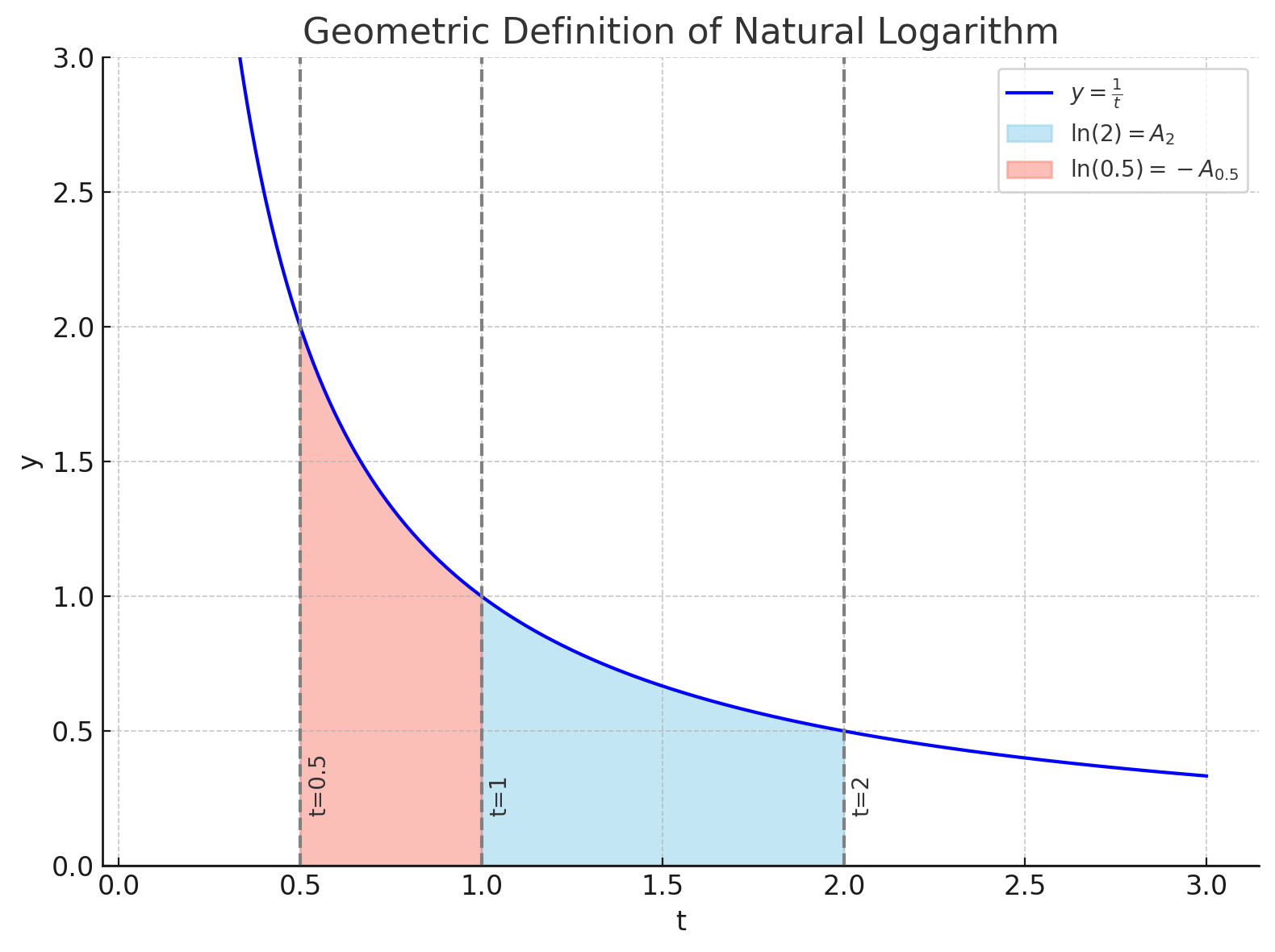Compound interest where you make the compounding rate infinitesimally small.
Formal Derivation
This is one approach to arrive at from
ln Definition
For , let be the area of the region in the -plane bounded by the curve , the -axis, and the vertical lines and .
Define:
Note that the domain of is , for , for , and .
Note that these properties all hold for when .

Theorem 1: Derivative of ln
Let . Then
Note: this is a special case of the Fundamental Theorem of Calculus.
Proof
Let . Apply the definition:
For , from the graph, we see that for , the small rectangle is (width x height)
and the large rectangle is at the earlier point
thus,
this is clear if , but in fact it is true for all . Thus,
By the squeeze theorem
Note: same argument works for
Theorem 2: Properties of ln(x)
Proof
(i) Fix , and let .
By chain rule,
So, is constant as a function of .
For , , but if is constant then
therefore
(ii) last part is due to (i)
re-arranging we get
(iii)
(iv) for integers, expand into either or then apply (i) and (ii) recursively to get:
for rational start with:
therefore
Exponential Function
Since is 1:1, it has an inverse function called the exponential function:
is the unique s.t. .
Normally we end up reversing roles and .
Theorem 3: properties of exp
is a given from .
Proof
(i)
Since ln is 1:1,
(ii)
(iii) from (i) and (ii).
(iv) from recursive (i).
Derivative of exp
Inverse function theorem (diff & chain rule on ):
For and :
WOW.
e
Define .
Using (iv):
So, define
a^x
Taking derivative of RHS using chain rule we get:
log
Defn: for is defined to be the inverse of s.t.
from definition
Compound Interest Definition
Proof
Apply substitution
Last part is derivative of at .